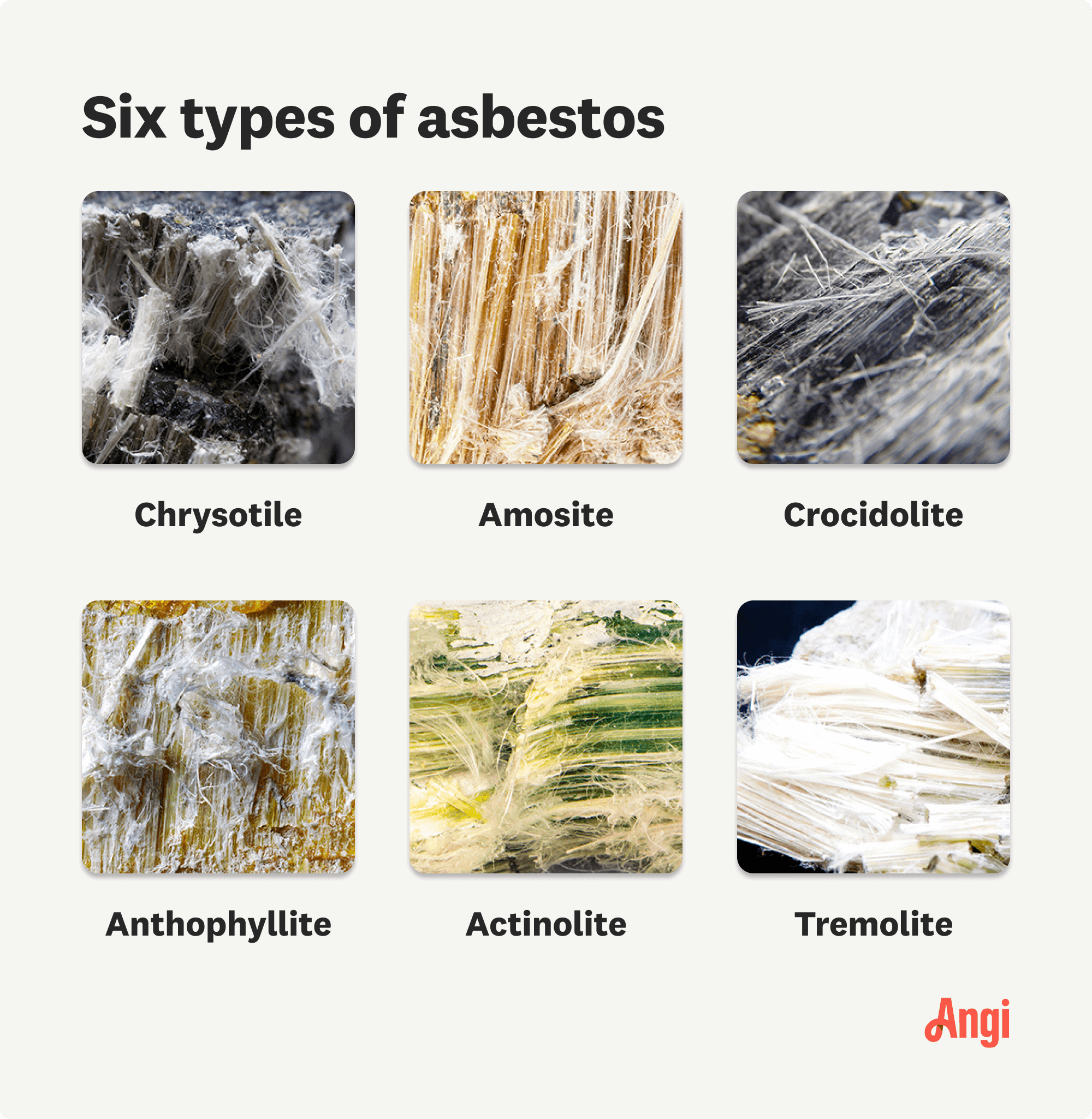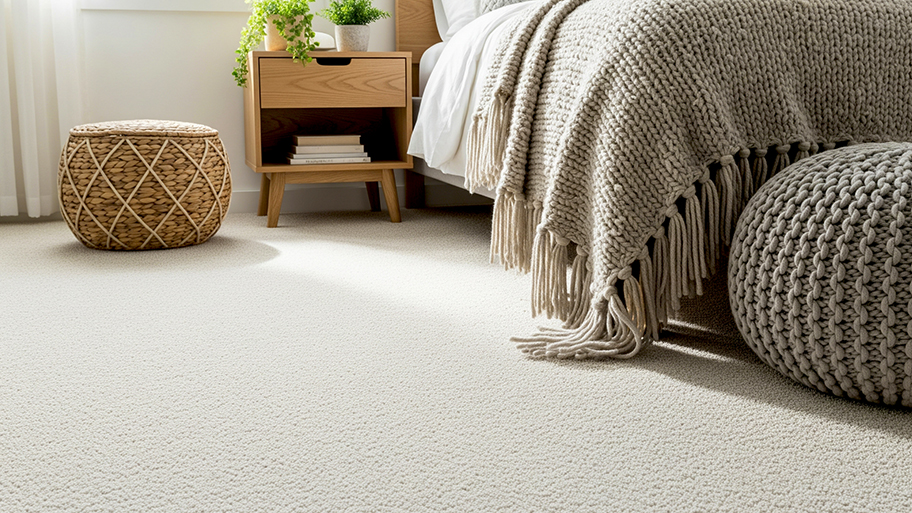
The cost of asbestos testing varies based on location, property size, test type, and other factors. Here’s a breakdown of the costs to conduct an asbestos survey.
Any type of asbestos can be bad news for your health


An asbestos inspection pro can explain which type you’re dealing with, how risky the material is, and whether testing, removal, or encapsulation makes the most sense.
Older homes are far more likely to contain asbestos, and testing is relatively affordable.
Asbestos can appear in a wide variety of products, so a specialist can pinpoint where the risks actually are.
Condition matters more than the type; intact materials may be managed, while damaged items often need removal or sealing.
Amphibole fibers, like amosite, crocidolite, and tremolite, carry higher health risks, making a professional inspection especially important if these are suspected.
Asbestos is not just a single product. It is a collection of minerals that includes six different types, used (and eventually restricted) across commercial and residential building materials. Five of the six types belong to the amphibole family, while one—chrysotile—is categorized in the serpentine family. Here is what you need to know about the types of asbestos, the risk asbestos carries, and what to do about it if you suspect it is in your home.
Asbestos has been used for industrial purposes in the United States since 1858. Sixty years later, the federal government acknowledged the health risks and high early death rates in people who regularly worked with asbestos. By the 1940s, researchers established a link between asbestos and specific diseases, such as asbestosis and cancer.
Thirty years later, several U.S. agencies began to increase restrictions on asbestos use and exposure. An attempt by the Environmental Protection Agency (EPA) to ban asbestos altogether was overturned by the U.S. Fifth Circuit Court of Appeals in 1991. As a result, the mineral can still be found in several types of products manufactured today.
The EPA proposed a rule in April 2022, however, which would ban chrysotile asbestos, the only known form of asbestos currently imported into the country.
Older homes are more likely to contain materials with asbestos, and data from Angi customers shows that 78.1% of homes that needed asbestos removal were built before 1978. Only 12.4% of homes needing asbestos removal were built after 1978. If you have an older home, preventative asbestos testing by a professional abatement company is a smart, safe choice.

Each type of asbestos resists fire, chemicals, and electricity. All are strong and durable, not to mention dangerous for human health. But the types of asbestos differ in terms of the shape of their fibers, color, and uses. Learn more about each type and where you might find them.
Chrysotile is the most commonly used asbestos in the United States. It accounts for most cases of mesothelioma and other asbestos-related diseases, mainly due to its ubiquity. Still mined in Canada, Russia, and Italy, chrysotile is currently integrated into products that are densely packed and non-friable (i.e., they cannot be pulverized into powdery textures using hand strength).
Chrysotile is white, with long, curly fibers. It is a type of serpentine asbestos, due to the twisty shape of its fibers.
Companies use chrysotile to create various home and consumer products, including:
Asphalt
Adhesives
Brake pads, clutches, and disk pads
Cement
Drywall
Gaskets
Insulation
Roofing materials
Textiles
Vinyl tiles
No level of exposure to asbestos is considered safe, but what you do with any asbestos-containing materials depends largely on their condition. If the material is in bad shape, then removing it is the best choice. But if the material is intact and you do not plan on remodeling it soon, leaving it alone is often the way to go.
Considered the second most often used type of asbestos in U.S. industries, amosite is also known as grunerite in its unmined and unprocessed state. Most commonly found in South Africa, amosite poses a higher risk of disease to humans than an equivalent amount of chrysotile.
Amosite is an amphibole type of asbestos, meaning it has short, straight fibers. The mineral is typically brown in color.
Products that might contain amosite include:
Cement sheets
Electrical, plumbing, and thermal insulation
Fire protection
Gaskets
Roofing materials and products
Vinyl tiles
While all types of asbestos are bad news, amphibole fibers can be particularly dangerous. They are short and straight and can more easily embed into organ tissue than serpentine fibers, causing irritation and scarring. If material containing amosite asbestos is disturbed or damaged, removal is the best option.
Among the five types of asbestos in the amphibole family, crocidolite (or blue) asbestos is widely considered to be the most dangerous. Its crystal fibers are extremely fine, meaning that it is far easier for people to inhale.
Crocidolite asbestos is blue in color. As it is an amphibole asbestos, it has short, straight fibers.
Crocidolite was never as common in commercial manufacturing because it is not as heat resistant as other types; however, it can be found in the following products:
Ceiling tiles
Cement sheets
Various kinds of insulation
While crocidolite is not common, if a building material contains it and that material is damaged or at risk of being disturbed, removal by a professional asbestos abatement company is the way to go.
Ranging in color from yellow to brown, anthophyllite is composed mainly of iron and magnesium.
Anthophyllite consists of long, thin fibers, as it is another type of amphibole asbestos. It can be yellow or brown in color.
Like crocidolite, anthophyllite asbestos was not extensively used for commercial manufacturing purposes, but it can be found in cement and insulation-related products.
Anthophyllite asbestos may need to be removed if the material containing it is damaged or there is any risk of exposure. If the materials are intact, it can be left alone.
Actinolite is generally dark in color and comprises other minerals, including iron, silicon, calcium, and magnesium.
Actinolite comes in various colors, including white, gray, dark green or yellow. It has short, straight fibers.
It can be found in older cement, drywall, insulation, paints, and sealants.
Like other types of asbestos, how you handle actinolite depends on its condition. If the material containing it is damaged or you are planning an extensive remodel, removal is recommended. If the material is in good condition and there are no plans for renovation, you may leave it alone.
Encapsulation is also an option. During encapsulation, the asbestos-containing material is sealed, reducing the chance of any fibers becoming airborne.
Tremolite asbestos comes in a range of colors, from dark green to pale, filmy white. It is also found predominantly in other minerals, including talc and vermiculite.
Tremolite can be white or dark green in color. Since it is an amphibole asbestos, it has long, thin fibers.
Tremolite is not mined anymore; however, it was previously incorporated into paint, insulation, and some plumbing products.
Like other types of asbestos, leaving the tremolite-containing material alone may be the best choice, as long as it is in good condition. If damaged, removal or encapsulation may be the best option.
All six types of asbestos pose a significant risk to the health of human beings. The disease most commonly associated with asbestos exposure is mesothelioma, an aggressive and often terminal type of cancer that affects the tissue lining of most internal organs (known as the mesothelium). Symptoms include chest or abdominal pain, harsh coughing, shortness of breath, nausea, and unexplained weight loss.
Asbestosis is also caused by inhaling asbestos fibers. Over a prolonged period of exposure, these fibers eventually create fibrous tissue scars in the lungs, resulting in shortness of breath, a persistent cough, and chest discomfort or pain. The symptoms may be mild or severe and usually only become noticeable years after the period of exposure. Given current workplace regulations, it is rare for people to acquire this disease if they are following workplace safety guidelines.
While each type of asbestos has a distinct appearance, the tricky thing is that you can only see those distinctions under a microscope. You cannot simply look at a material and tell if it contains asbestos or not.
If you want to determine if your home contains asbestos, the most important thing is not to touch it or attempt to remove it yourself. This is one area of home improvement where a DIY approach poses a real risk of physical danger to the DIYer and anyone in the area. Instead, hire a professional asbestos testing company to take a sample of the material and analyze it for you.
The average cost of asbestos testing is just under $500, but your location and the complexity of the test both affect the final price. The results of the test will also affect the total cost. A positive test may mean you need asbestos management or removal.
From average costs to expert advice, get all the answers you need to get your job done.

The cost of asbestos testing varies based on location, property size, test type, and other factors. Here’s a breakdown of the costs to conduct an asbestos survey.

Asbestos removal costs vary based on where it’s located, the size of the job, and if there is any underlying damage. Learn what has the biggest effect on the cost.

Get clear answers on asbestos tile removal cost, including average prices, cost factors, and tips to save money on safe, professional removal.

If your carpet was installed before 1980, you may have asbestos carpet underlay in your home. Learn how to identify the signs, and keep your risk low.

If you are wondering what asbestos pipe insulation looks like, you need to watch for a light gray wrap that resembles corrugated cardboard or paper.

If you think asbestos may be lurking in your home, keep reading to learn about the dangers of asbestos exposure before you take any action.